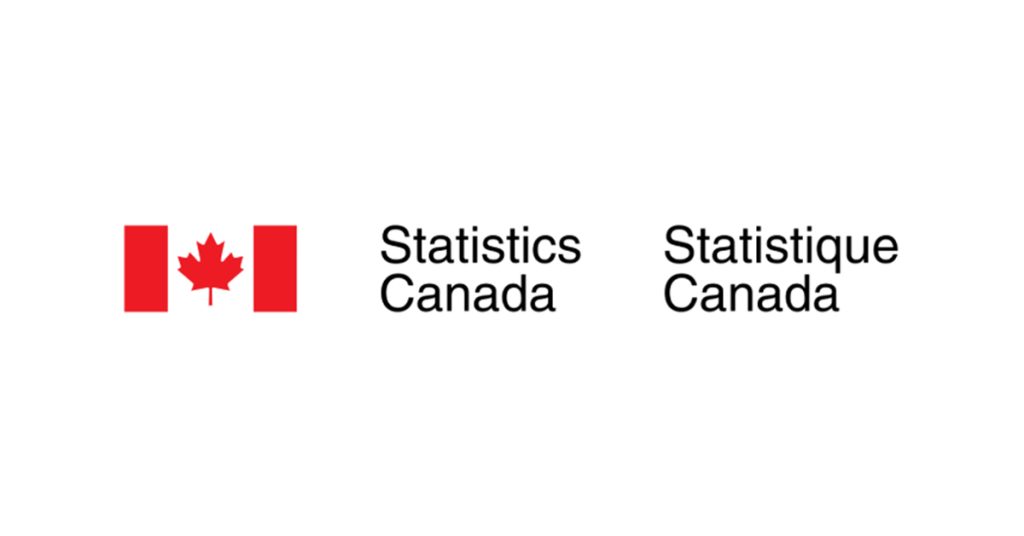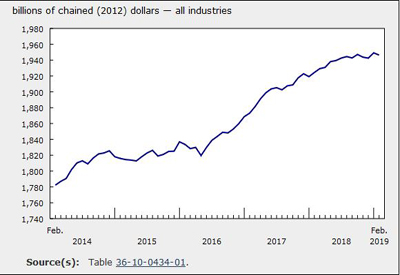Labour Force Survey, July 2024

August 12, 2024
Labour Force Highlights
Employment was little changed in July (-2,800; -0.0%), while the employment rate fell 0.2 percentage points to 60.9%. The unemployment rate was unchanged at 6.4%.
In July, employment decreased among women (-41,000; -2.6%) and men (-15,000; -0.8%) aged 55 to 64. Employment also fell among young men aged 15 to 24 (-20,000; -1.5%), while it increased among men aged 25 to 54 (+48,000; +0.7%).
Employment fell in wholesale and retail trade (-44,000; -1.5%) as well as in finance, insurance, real estate, rental and leasing (-15,000; -1.0%) in July. Employment increased in public administration (+20,000; +1.6%), transportation and warehousing (+15,000; +1.4%) and utilities (+6,200; +4.2%).
Employment declined in Manitoba (-5,400; -0.8%) and Nova Scotia (-4,800; -0.9%) in July, while it increased in Ontario (+22,000; +0.3%) and Saskatchewan (+6,700; +1.1%).
Total hours worked rose 1.0% in July and were up 1.9% compared with 12 months earlier.
Average hourly wages among employees increased 5.2% (up $1.73 to $34.97) on a year-over-year basis in July, following growth of 5.4% in June (not seasonally adjusted).
The employment rate of returning students aged 15 to 24 was 51.3% in July, down 6.8 percentage points from July 2023 (not seasonally adjusted).
Employment little changed for third consecutive month
Employment held steady for the third consecutive month in July (-2,800; -0.0%). On a year-over-year basis, employment was up by 346,000 (+1.7%).
The employment rate—the proportion of the population aged 15 and older who are employed—fell 0.2 percentage points to 60.9% in July. The employment rate has followed a downward trend since reaching a high of 62.4% in January and February 2023 and has fallen in 9 of the last 10 months.
In July 2024, an increase in full-time work (+62,000; +0.4%) was offset by a decline in part-time work (-64,000; -1.7%). Despite these changes, part-time employment (+3.4%; +122,000) has grown at a faster pace compared with full-time employment (+1.4%; +224,000) on a year-over-year basis.
Chart 1
Employment rate falls in July, continuing downward trend

Private sector employment declines
The number of private sector employees fell by 42,000 (-0.3%) in July, following two months of little change. On a year-over-year basis, private sector employment growth was up by 0.6% (+86,000) in July.
Public sector employment rose by 41,000 (+0.9%) in July and was up by 205,000 (+4.8%) compared with 12 months earlier. Public sector employment gains over the last year have been led by increases in health care and social assistance (+87,000; +6.9%), public administration (+57,000; +4.8%) and educational services (+33,000; +3.3%) (not seasonally adjusted).
Self-employment was little changed in July and was up by 55,000 (+2.1%) on a year-over-year basis.
Employment falls among young men aged 15 to 24 as well as among women and men aged 55 to 64
Employment declined for young men aged 15 to 24 (-20,000; -1.5%) in July, while it held steady for women of the same age group. The employment rates of young men (-5.5 percentage points to 52.4%) and young women (-2.4 percentage points to 55.7%) were down on a year-over-year basis.
Employment increased by 48,000 (+0.7%) among core-aged men (25 to 54 years old) in July. The increase in the employment rate for this group in July (+0.2 percentage points to 86.8%) partially offset the cumulative decline of 0.7 percentage points in May and June.
On a year-over-year basis, the employment rate was down both for core-aged women (-1.0 percentage points to 80.5%) and core-aged men (-0.9 percentage points to 86.8%) in July.
For people aged 55 to 64, employment fell among women (-41,000; -2.6%) and men (-15,000; -0.8%) in July. The employment rate was down compared with 12 months earlier for women in this age group (-1.7 percentage points to 58.8%), while it was little changed for men (69.3%).
Infographic 1
Employment rate trends by age group

Employment rate continues to trend lower among returning students in July
From May to August, the Labour Force Survey (LFS) collects labour market information from students aged 15 to 24 who attended school full time in March and who intend to return to school full time in the fall.
In July, the employment rate of returning students aged 15 to 24 was 51.3%, down 6.8 percentage points from July 2023. This was the lowest rate since July 1997, outside of July 2020 during the COVID-19 pandemic. In July 2024, year-over-year employment rate declines were observed for male returning students (-9.1 percentage points to 47.9%) and for female returning students (-4.6 percentage points to 54.5%) (not seasonally adjusted).
The unemployment rate for returning students was 17.2% in July, the highest rate for July since 2009 (excluding July 2020).
Labour market indicators for July are consistent with those for May and June and reflect a much more difficult summer job market for young returning students in 2024 compared with previous years.
Chart 2
Employment rate for returning students falls on a year-over-year basis in July

Unemployment rate unchanged at 6.4% in July
The unemployment rate was unchanged at 6.4% in July, following two consecutive monthly increases in May (+0.1 percentage points) and June (+0.2 percentage points). On a year-over-year basis, the unemployment rate was up by 0.9 percentage points in July.
The unemployment rate for youth aged 15 to 24 was 14.2% in July, up 0.7 percentage points from the previous month and the highest rate since September 2012 (outside of 2020 and 2021 during the pandemic).
Among young men, the unemployment rate rose 1.3 percentage points to 16.0% in July 2024, continuing a strong upward trend observed since January, with a cumulative increase of 5.0 percentage points over this period. The unemployment rate for young women (12.3%) was little changed for a second consecutive month in July. On a year-over-year basis, the rate for young women was up by 1.9 percentage points.
The unemployment rate decreased for core-aged men (-0.3 percentage points to 5.3%) and core-aged women (-0.2 percentage points to 4.9%) in July. For core-aged men, the decline was the first since August 2023. Among people aged 55 and older, the unemployment rate for women (4.9%) and men (5.1%) was little changed in July 2024.
Chart 3
Unemployment rate holds steady at 6.4% in July

Infographic 2
Unemployment rate trends by age group

Unemployment rate rises more for recent immigrants than for people born in Canada
Recent immigrants often face barriers integrating into the labour market, including difficulties getting educational credentials or work experience acquired abroad recognized and lacking job experience or references in Canada.
From July 2023 to July 2024, the unemployment rate of recent immigrants (who had landed in Canada within the previous five years) rose 3.1 percentage points to 12.6% (three-month moving averages, not seasonally adjusted).
The increase was particularly notable for recent immigrant youth; the unemployment rate for this group was 22.8% in July, up 8.6 percentage points from one year earlier. For recent immigrants in the core working age, the unemployment rate rose by 2.0 percentage points to 10.4% over the same period.
In comparison, the unemployment rate for people born in Canada was up 0.5 percentage points to 5.6% on a year-over-year basis in July, while the rate for more established immigrants (who had landed in Canada more than five years earlier) was up 1.2 percentage points to 6.3%.
Chart 4
Larger rise in unemployment rate for recent immigrants in July compared with 12 months earlier

Labour force participation rate falls
The labour force participation rate—the proportion of the population aged 15 and older who are either working or looking for work—fell 0.3 percentage points to 65.0% in July, the lowest rate since June 1998 (excluding 2020 and 2021, during the pandemic). On a year-over-year basis, the participation rate was down 0.6 percentage points in July 2024.
Although the aging of the baby boomer cohort has put downward pressure on the labour force participation rate over the years, the most recent year-over-year decline in July 2024 largely reflected declines among young men (-2.5 percentage points to 62.4%), young women (-1.3 percentage points to 63.5%) and core-aged women (-1.0 percentage point to 84.6%).
Of youth aged 15 to 24 who were out of the labour force in July, 12.0% wanted work but did not search, an increase of 2.6 percentage points compared with 12 months earlier (not seasonally adjusted). A more difficult labour market for young people may lead some to stop or pause their job search.
The proportions of core-aged women who were out of the labour force in July and reported caring for children as their main activity (41.5%) or having an illness or a disability (16.0%) were little changed compared with the same month in 2023 (not seasonally adjusted). The proportion of core-aged women who were out of the labour force but wanted work was 9.0% in July 2024, also little changed from one year earlier.
Employment falls in wholesale and retail trade
In July, employment declined by 44,000 (-1.5%) in wholesale and retail trade, continuing a general downward trend observed since August 2023. On a year-over-year basis, employment in the industry was down by 127,000 (-4.2%) in July 2024.
Employment in finance, insurance, real estate, rental and leasing declined by 15,000 (-1.0%) in July, the first decline since November 2023. Employment in this industry was little changed on a year-over-year basis in July 2024.
Employment in public administration rose by 20,000 (+1.6%) in July, following a decline in June (-8,800; -0.7%). Employment in transportation and warehousing also increased in July (+15,000; +1.4%), partially offsetting declines in May (-21,000; -1.9%) and June (-12,000; -1.1%).
Chart 5
Employment declines in wholesale and retail trade in July

Employment decreases in Manitoba and Nova Scotia, while it increases in Ontario and Saskatchewan
Employment in Ontario rose by 22,000 (+0.3%) in July, as gains in full-time employment (+70,000; +1.1%) were partly offset by declines in part-time work (-48,000; -3.2%). The unemployment rate in Ontario fell 0.3 percentage points to 6.7% in July, offsetting a similar increase in June.
Employment in Manitoba declined by 5,400 (-0.8%) in July, and the unemployment rate rose 0.6 percentage points to 5.7%. Employment also declined in Nova Scotia (-4,800; -0.9%), following little change in the previous four months.
In Saskatchewan, employment rose by 6,700 (+1.1%) in July, the second increase in the last three months. The unemployment rate in the province was 5.4% in July, little changed in the month and on a year-over-year basis.
In Quebec, employment was little changed in July and the unemployment rate held steady at 5.7%. Employment in the province was also little changed on a year-over-year basis, while the number of people in search of employment grew by 62,000 (+29.6%), pushing the unemployment rate up 1.2 percentage points.
Map 1
Unemployment rate by province and territory, July 2024

Unemployment rate on an upward trend in both Canada and the United States
By adjusting Canadian data to US concepts, direct comparisons can be made between the labour market situations in Canada and the United States. For more information, see “Measuring Employment and Unemployment in Canada and the United States – A comparison.”
Adjusted to US concepts, the unemployment rate in Canada for July (5.4%) was 1.1 percentage points higher than in the United States (4.3%). Compared with 12 months earlier, the unemployment rate increased by 0.8 percentage points in both Canada and the United States.
The employment rate has trended down in both countries over the past 12 months, but the decline has been larger in Canada. From July 2023 to July 2024, the employment rate (adjusted to US concepts) fell by 1.0 percentage points to 61.5% in Canada, while it declined by 0.4 percentage points to 60.0% in the United States.
In the spotlight: Mothers remain more likely than fathers to prioritize childcare in their career decisions
In addition to general labour market conditions, employment and career trajectories of men and women can be influenced by gender differences in household and childcare responsibilities. In July, the LFS asked additional questions to better understand career and employment barriers experienced by mothers and fathers.
Compared with their male counterparts, higher proportions of core-aged mothers with a child aged 12 and younger had turned down a job offer (7.0% compared with 3.7% of fathers), changed to a less demanding job or position (8.2% compared with 3.7% of fathers) or reduced their regular work hours (18.2% compared with 10.1% of fathers) over the 12-month period ending in July.
In July, the share of employed mothers who had made at least one career or job-related decision that prioritized childcare over their career in the last year (40.6%) was little changed from September 2022, when the question was last asked in the LFS.
Chart 6
Employed mothers more likely than fathers to reduce their regular work hours or to not apply for a job or promotion












